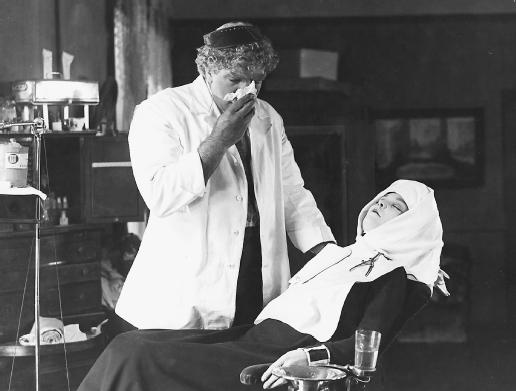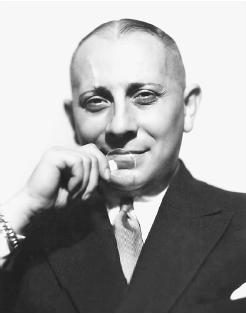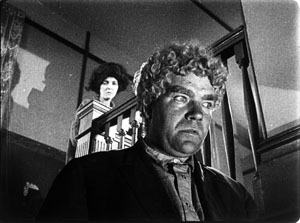(Note: As I state, some accounts say the original cut of Greed was nine hours long, some say ten. It is referred to by both lengths at separate times in this piece.)

- · Greed (1924) has been called a Lost Film. But it is either the most renowned and visible lost film ever made, or it is not lost at all. Erich Von Stroheim took two years to shoot, in real locations in California. The original cut, as the story goes, was ten hours long. Some sources say nine. We won’t ever know exactly, because it was only screened once for a group of MGM executives in 1924. Those executives ordered the film cut down to two hours and twenty minutes, resulting in the version seen today. A furious Von Stroheim would remark that the only thing the man who edited his film had on his mind was “A Hat.” Sometime in the 1950’s, the remaining footage, which had been stored in dusty old MGM vaults, was thrown out by a janitor.
- · Thus, the strongest incidental pleasure of watching Greed is to watch for the parts where footage was excised. Sometimes we can only surmise: was the opening sequence introducing McTeague (Gibson Gowland), the selfish and bumbling fake dentist, expanded? (Probably). Was the ending fight scene in the California desert more drawn out? (We hope so). Then there are occasional cuts to black that roughly divide the acts in the film; they feel awkward only insofar as they are emphatic statements by the editor who was wearing a hat. “This footage can all go. Let’s end that part here.” That was the editor talking. In these brief periods of blackness, we can be rather sure there were large chunks of footage removed.

- · Von Stroheim worked with animals in startling, metaphorical ways. Greed features an Opportunist cat in a few key scenes and Innocent sparrows throughout, before revealing the inevitable Sinister desert reptiles at the climax. When McTeague’s friend Marcus (Jean Hersholt) tells him and Trina, played by Zasu Pitts (her character is Marcus’ former girlfriend, no less) that he will be moving out of town, his face fades in to that of McTeagues cat, who stares through its slit-eyes at the two unaware sparrows in their cage on a table. In time we will see just how Cat Marcus leaps on Sparrow McTeague. Stroheim’s aim appear to be that of a folktale; one of old-fashioned, but stylized moralism. It makes one want to see more animal-human dynamic interplay. But was there any more of this interplay in the lost footage? Or is this really all we got?
- · Frank Norris’ novel McTeague(1899) had been filmed once before, in 1916, under the title Life’s Whirpool. That film is lost entirely. It was Stroheim who took on the task of making a bigger film version, and who became obsessed with filming every single aspect of Norris’ novel. This is why shooting extended to two years. This is why the original cut was ten hours. This is what gives this filmgoer pause. Although we really can’t be sure what is meant by filming the entire novel—Stroheim most likely took liberties—any such painstaking fetish for content and detail is usually a slippery slope. (Witness the Harry Potter films. )One wonders if Stroheim’s obsession did indeed pay off; not for him (it didn’t), but for us. This is another reason to agonize over the loss of that extra footage; today, we could evaluate it in the context of faithfulness and artistic fetish. But this is also a reason to distrust that footage.

- · There is one early scene in Greed which is one of the most frightening in the whole film. McTeague meets Trina for the first time when Marcus brings her in to have her teeth cleaned. She lies back in his reclining chair and Marcus leaves them alone. McTeague inspects the inside of her mouth with his scalpel and the camera changes to an angle from her point of view of McTeague as he stops what he is doing and stares at Trina with wide and lustful eyes. The real fright in this scene comes from the fact that Trina’s eyes are closed, so she does not know of his feelings. There is no intercut to McTeague’s fantasy and he makes no advance on her; but the implication of what he wishes to do is clear. Once Marcus returns to take his girlfriend home, the first object of greed—in this case, McTeague’s greed for Trina-- has been set in motion. An unwise director would have added a sexual fantasy, and given Stroheim’s love of metaphorical imagery, it would not have been surprising if he did something to that effect. But this is one of the most powerful scenes in the film precisely because there is no wild psychology. It is a simple domestic vignette . Its underpinnings are malicious, but not quite psychotic. If Stroheim did film the entire novel of McTeague, then we can only hope that he filmed all the elegant details such as we see here. Literature, due to its basis in words, is better at minute descriptions of people and things that carry large implications than film is. Novels are given to more psychological probing than films. Stroheim knew how to capture these literary moments on film precisely, but did he focus on the novel’s minute descriptions and psychological probes, or did he simply extend its imagery and more sensational scenes? We won’t ever know, because the footage is lost.

- · The ending fight scene is no doubt one that audiences wish they could see more of. In one shot, McTeague and Marcus grapple with each other under the scorching sun that has cracked the desert ground, in front of a weary horse. We aren’t sure at this point if they are fighting over water—which Marcus is out of—or the 5,000 dollars that McTeague has run off with. In that one shot, McTeague beats Marcus to the ground and kills him. Marcus gasps out a few final breaths. McTeague realizes Marcus has handcuffed both their wrists. Cut to the scorching sun. McTeague realizes he won’t survive. This is pulsating cinema, made what it is because of the natural elements that surround these men and assist in dragging them down. We already know, as soon as Marcus finally encounters his old friend, that both men will die, making this one of the great-man-against nature endings in cinema. What more could Stroheim have done with this scene? Did he cut back and forth between the two men fighting? Did he insert more shots of the desert and the sun? What we have is an exciting scene that is not overdone by even an inch. One wonders if the extra footage overdid it.

- · Greed is a title that applies well to Stroheim himself. He was greedy for more and more footage, and he didn’t wish to condense the novel. He wanted it all. His greed saw its commupance. But today, audiences are interested in watching Greed not because of their own greed for its footage, but because of their greed for footage that isn’t there. We won’t ever be able to see it. So Greed has become a film to bemoan and romanticize, not one to watch and then take at face value. It started the glorified idea of the cinematic litmus test; Satantango (1994) and Berlin Alexanderplatz (1980) are two sound era litmus tests of astounding lengths. This flies in the face of a critic’s duty, which is not to worry about sitting through something to say you did it, but to put said experience in a certain context. Greed also started the misguided idea of “Director’s Cuts.” It is great in theory to allow a film to be restored by the filmmaker as it was meant to be. But it has led to excessive tripe like Coppola’s Apocalypse Now Redux (2001). It has given directors an excuse to say that the studio ruined their vision, so here is a long and very over-the-top version that may do more damage to the original than good.
- · Perhaps it is for the best that the anonymous janitor who worked at MGM in the mid-50’s threw out the remaining seven hours of Greed. There was a restored version created in 1999 by Turner Entertainment, in which the existing cut of Greed was combined with still photographs detailing additional scenes. If there was any point to this project, it was to give an outline of what Stroheim intended for the entire film. But to tack on still imagery to moving imagery in order to compensate for some loss is itself dishonest to a director’s vision. A director’s vision is only truly sketched out in motion. Photographs—especially if they amount to a tiring hour and twenty minutes—force us to watch a piece of historical research rather than a grander piece of moving entertainment.

- · If we were somehow to discover an original print that still existed, and released it to the world, it would inevitably be greeted with a mixture of rejoicing and dissapointment. There is no way a nine hour film, lost at the hands of merciless studio executives, could possibly live up to the mythology and adulation that has been built around it. Critics would be obligated to review the nine-hour cut with overwhelming positivity, yet there would be little discussing of the merits of this lost footage. This does not mean MGM was right to cut the film down to 140 minutes; it could probably be even better at three to four hours. Part of conserving cinema, however, is to work with what you can get. Greed as we have it now is a tight, condensed, menacing and thoroughly accomplished picture, far better than the majority of two-plus hour films. We should take the film we have any day, and restore it, promote it, and learn from it in our own filmmaking pursuits. Because the extra footage isn’t there.
